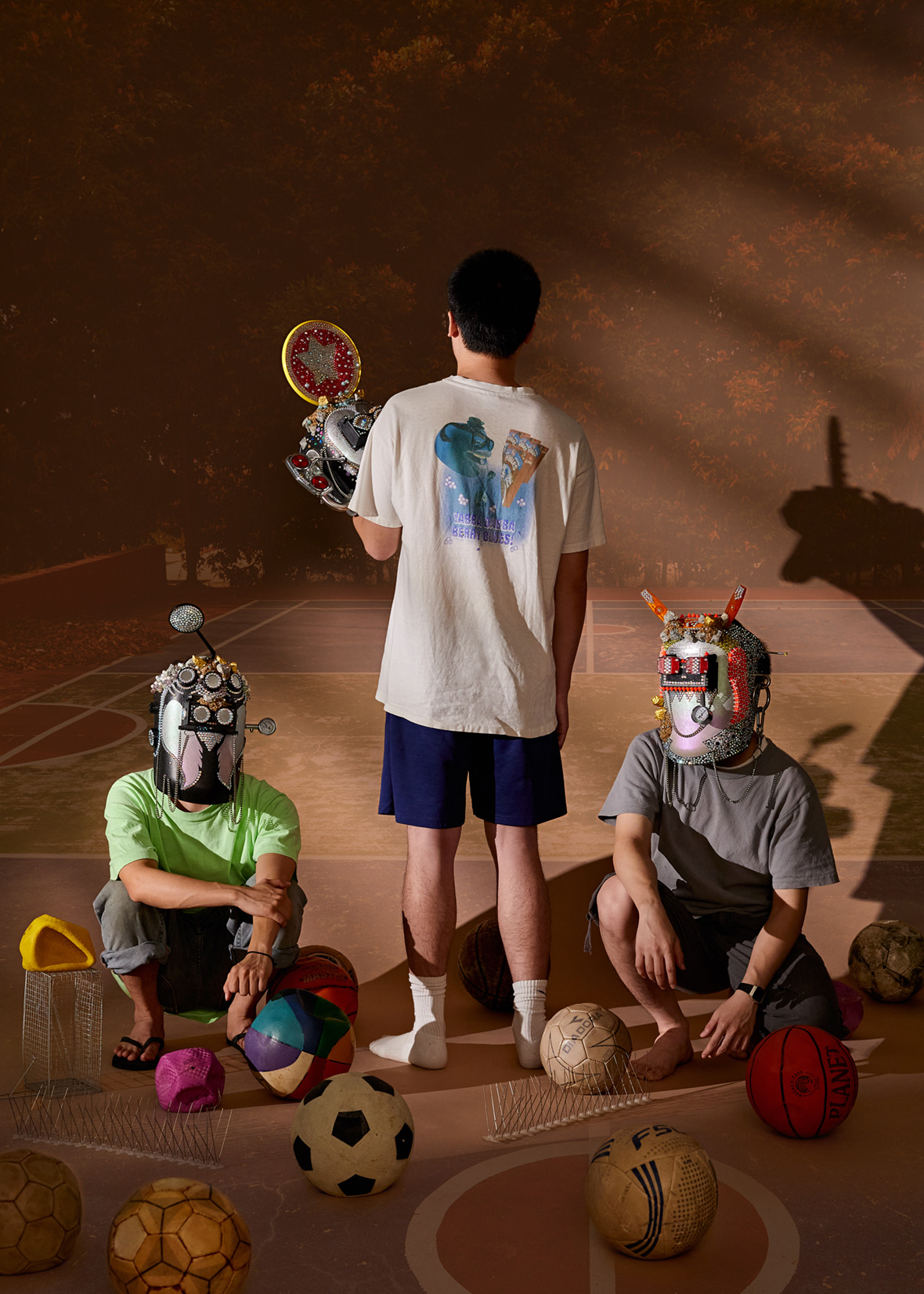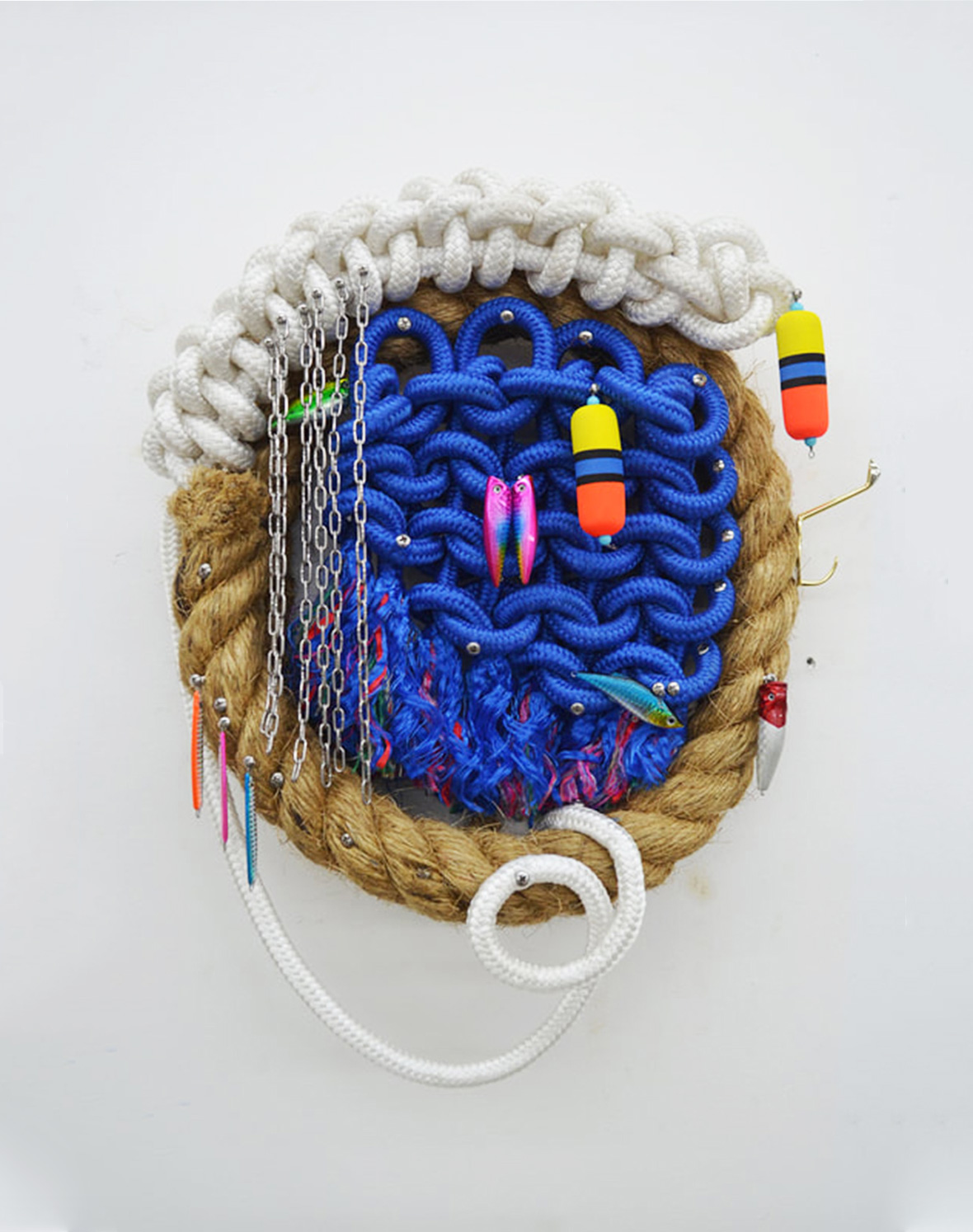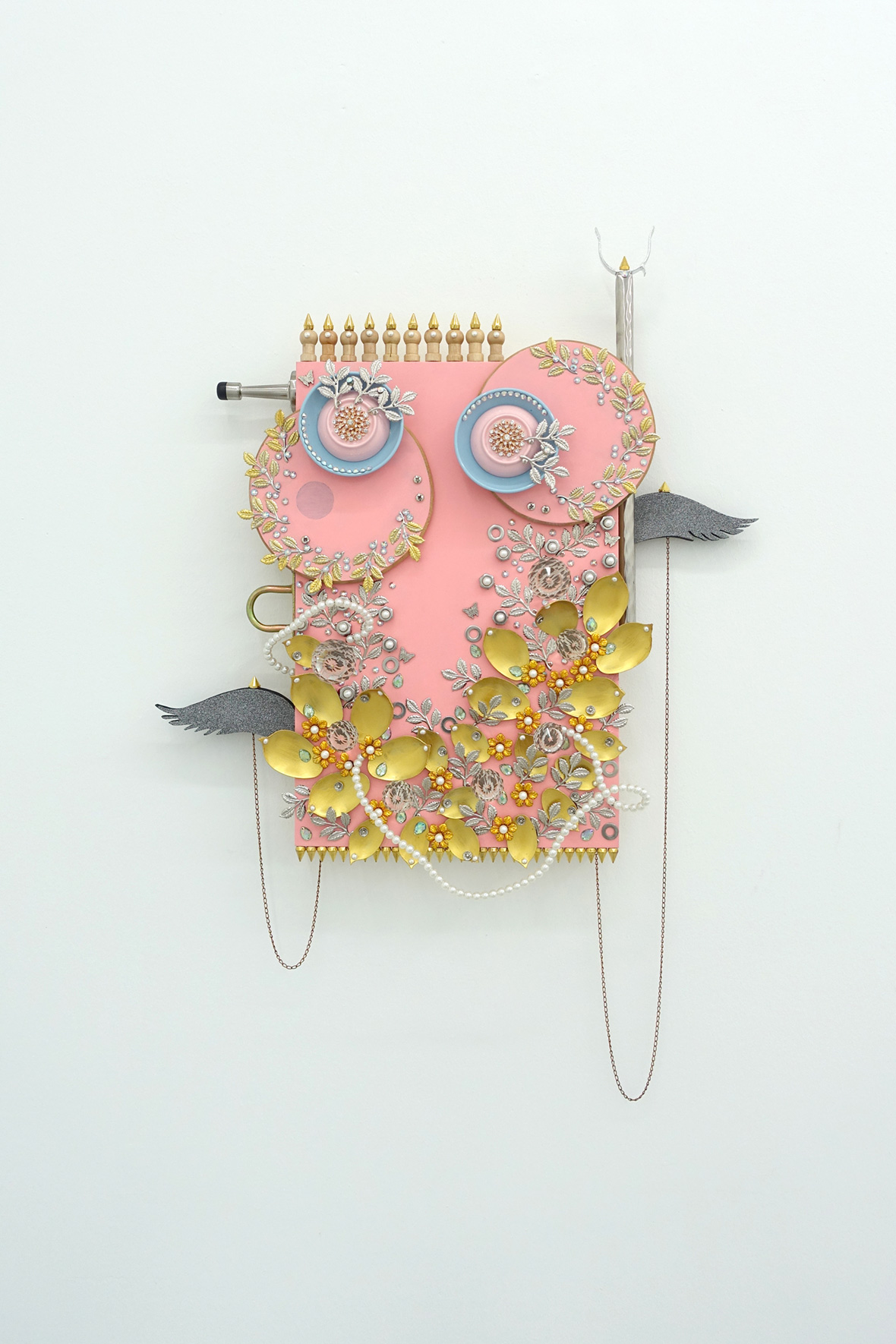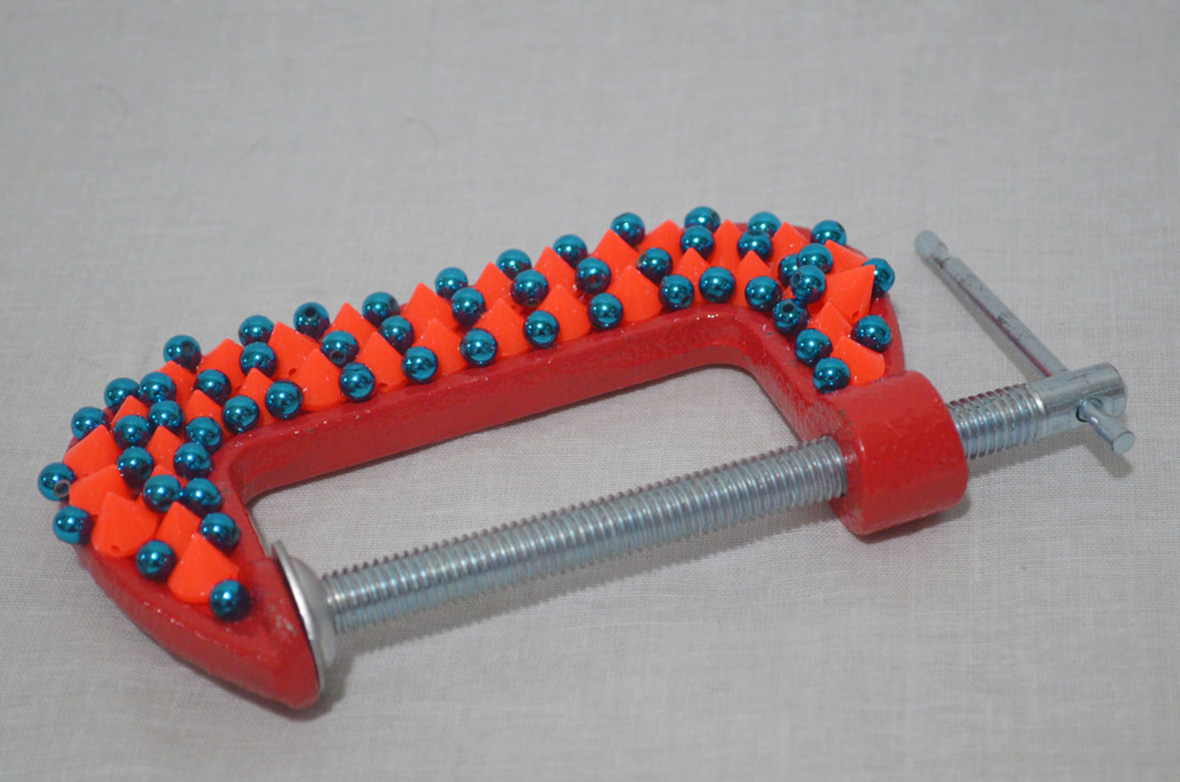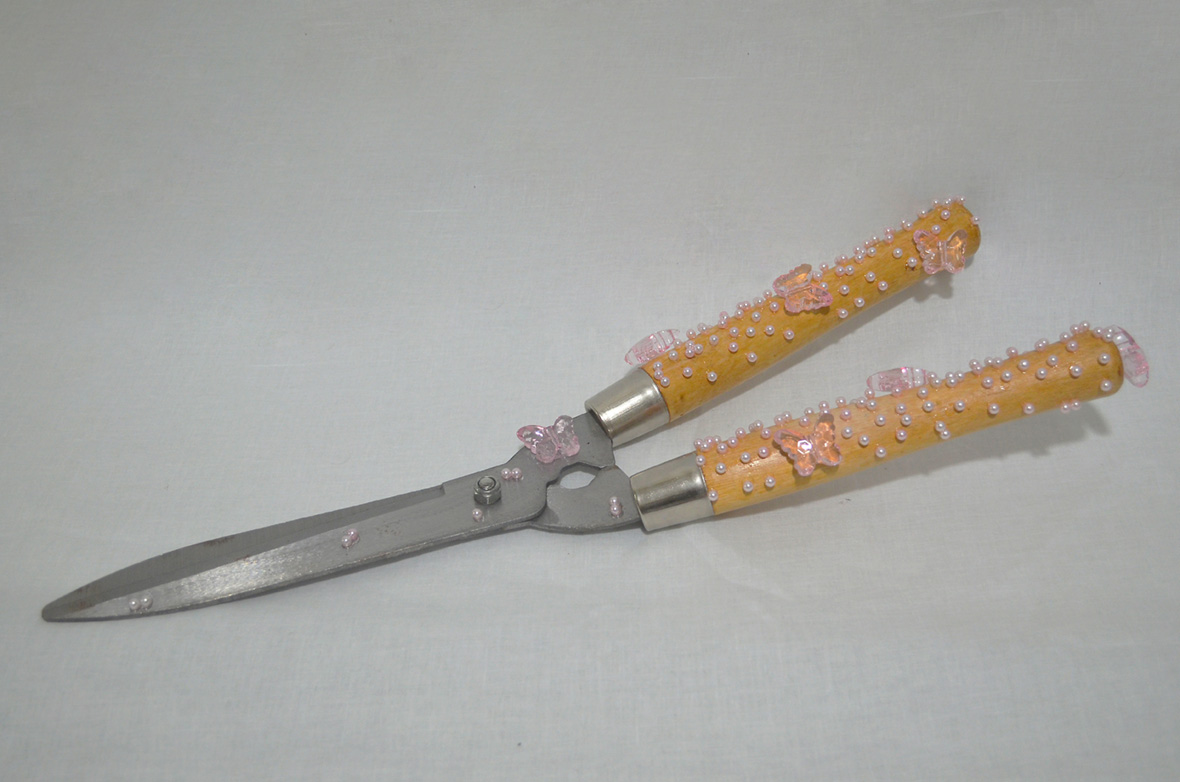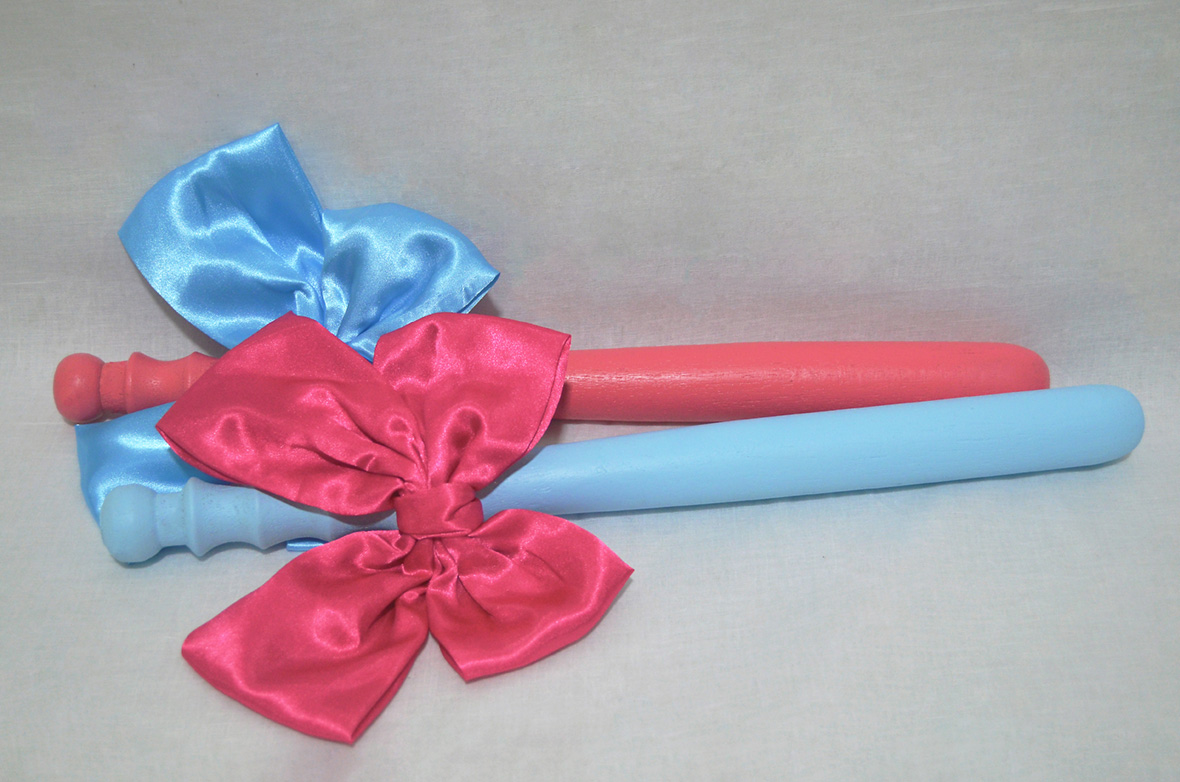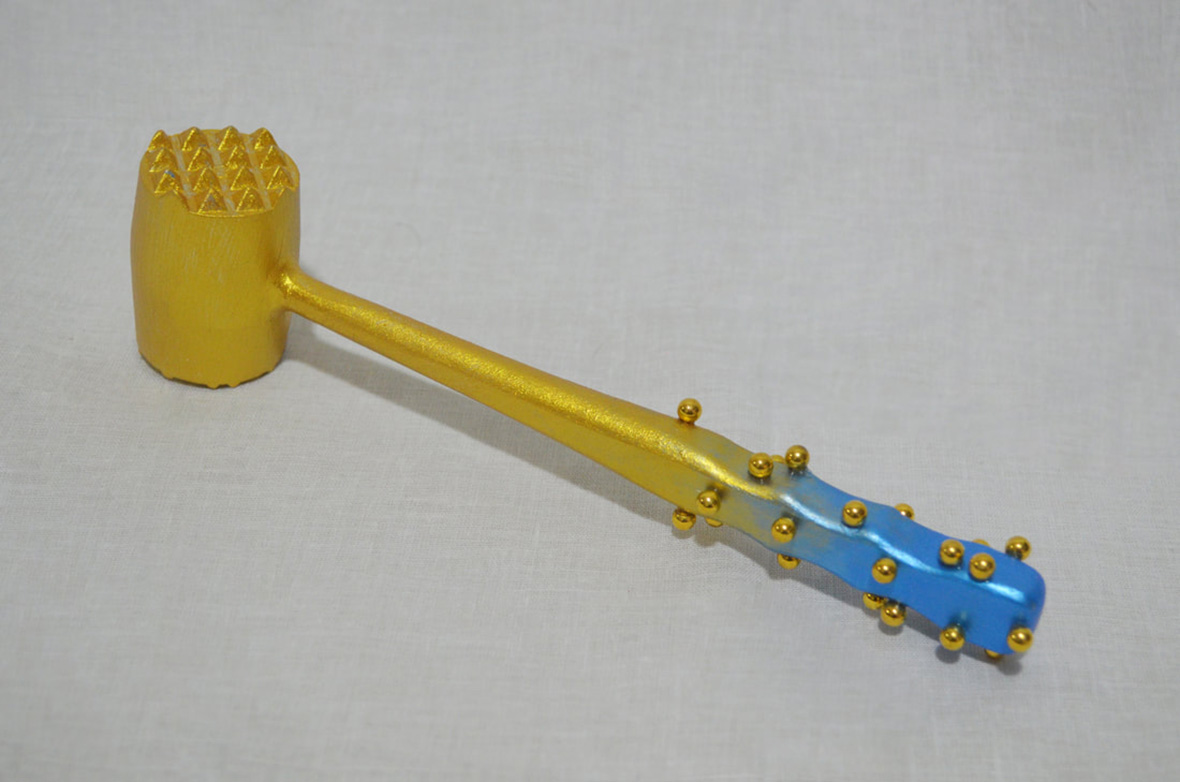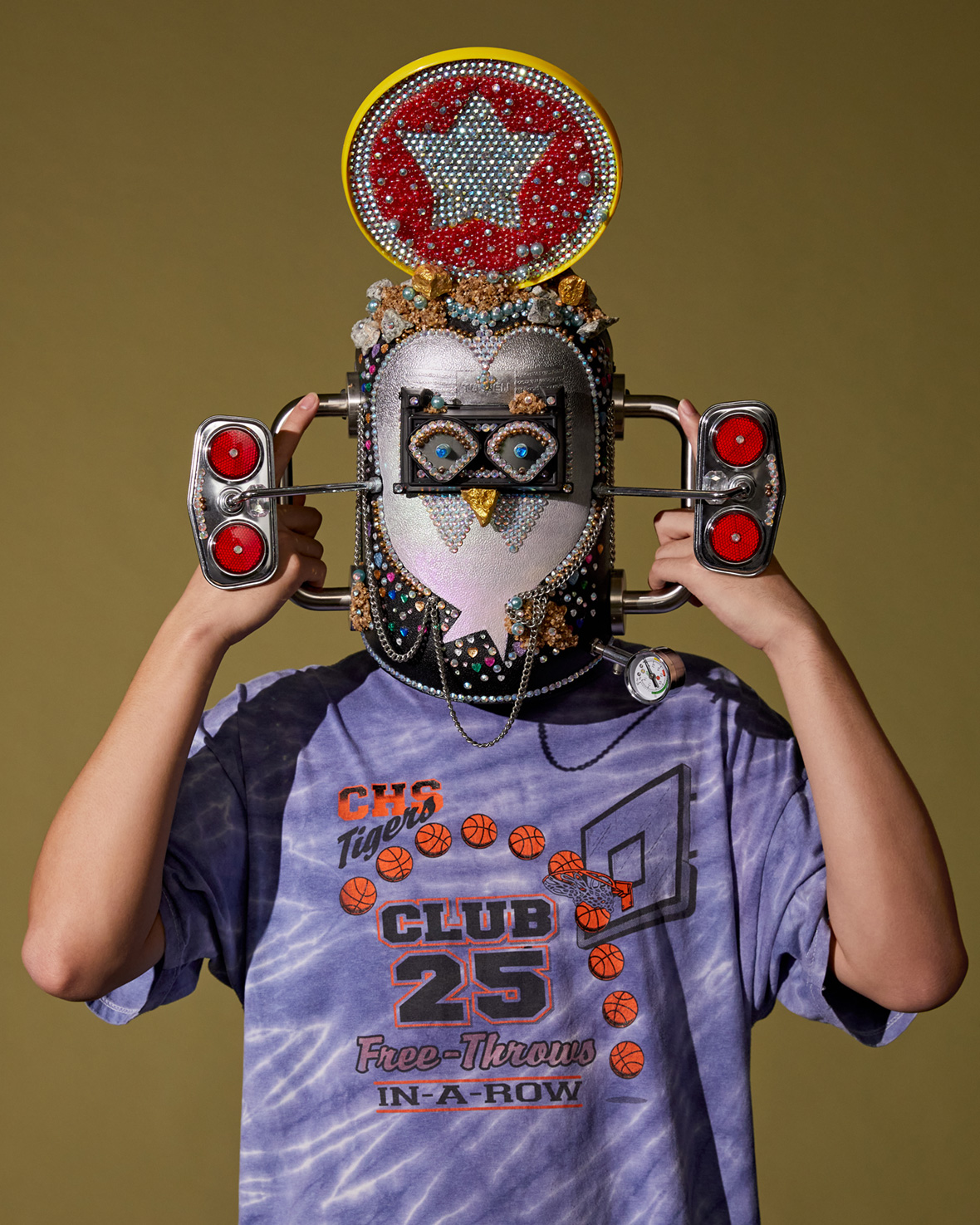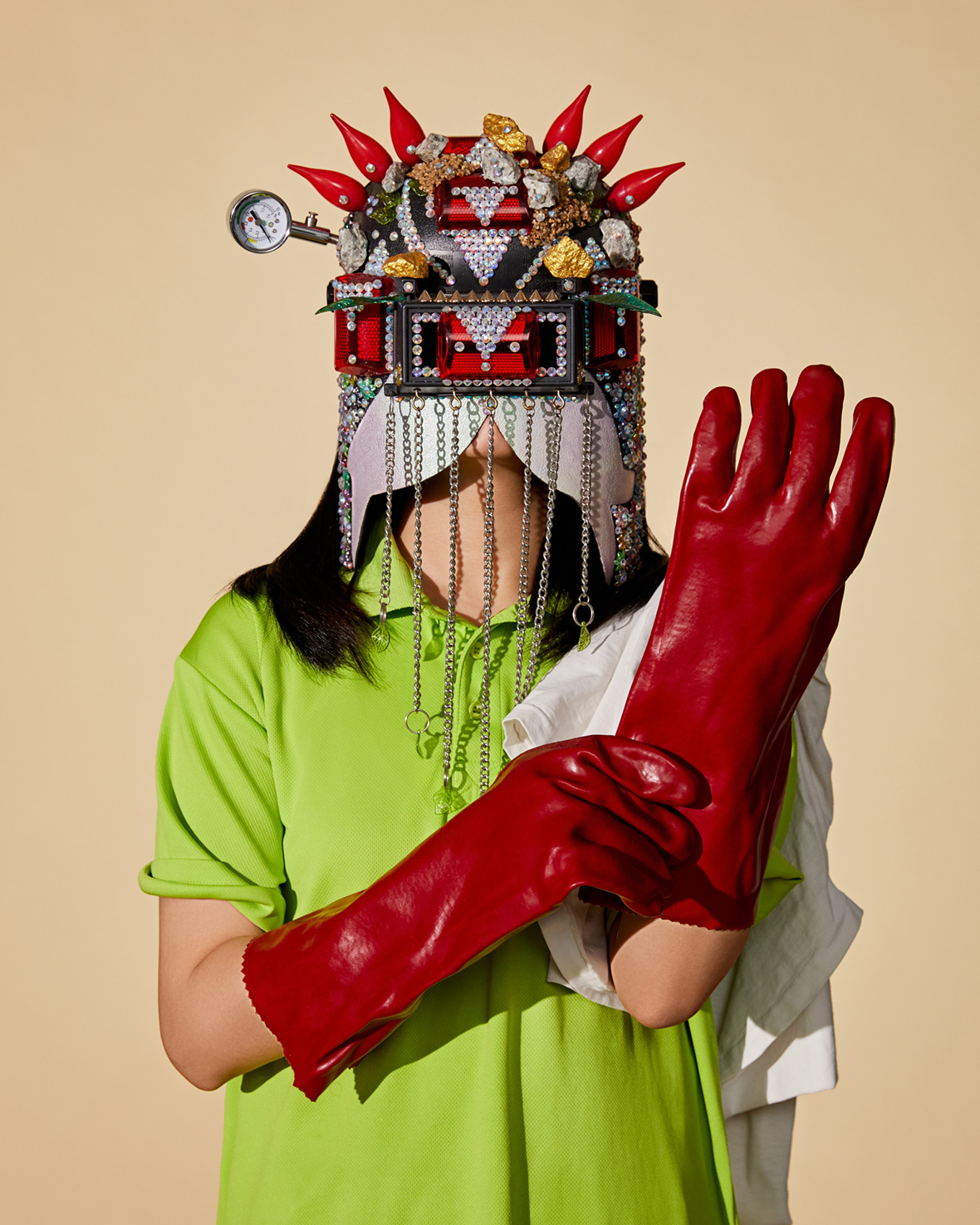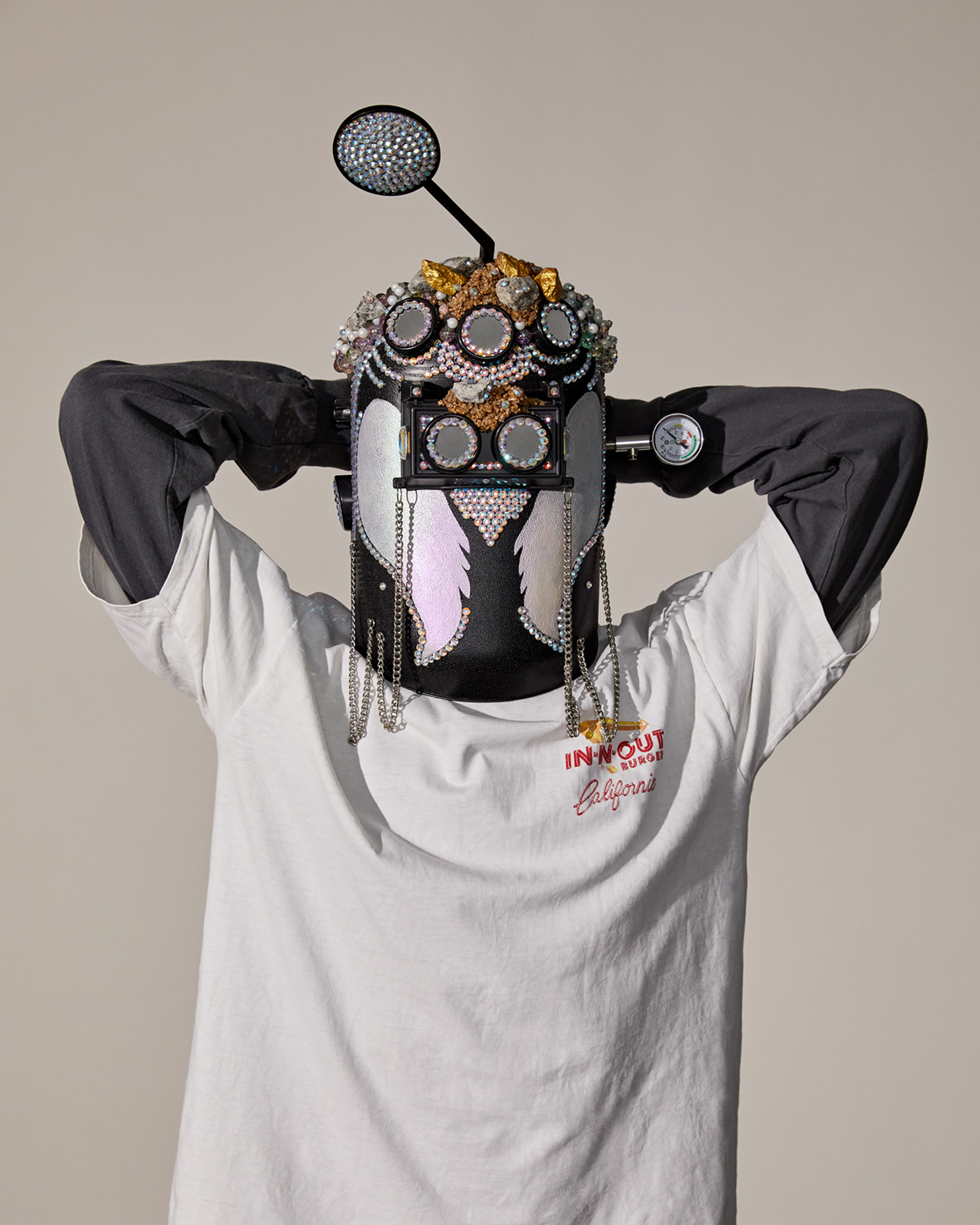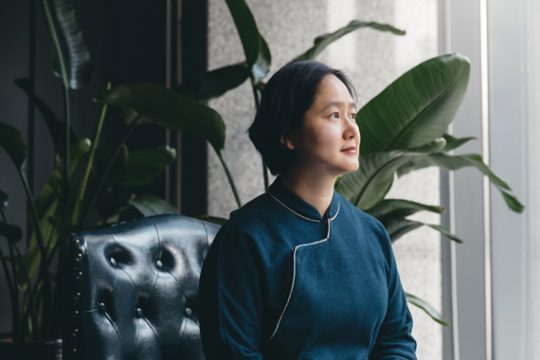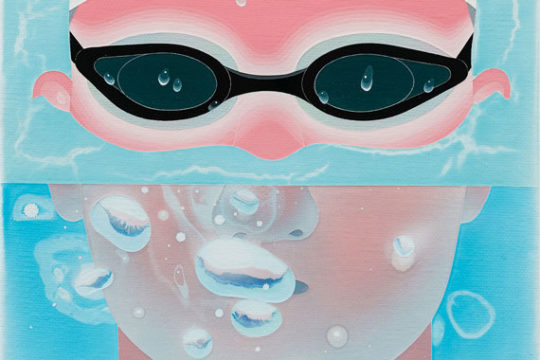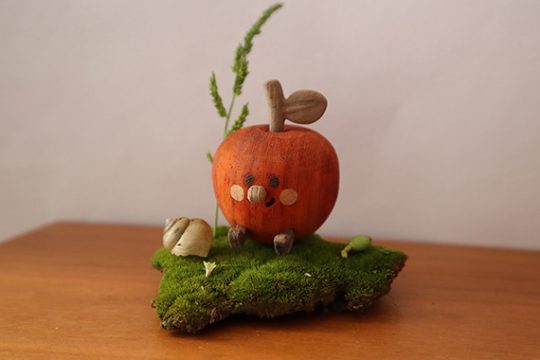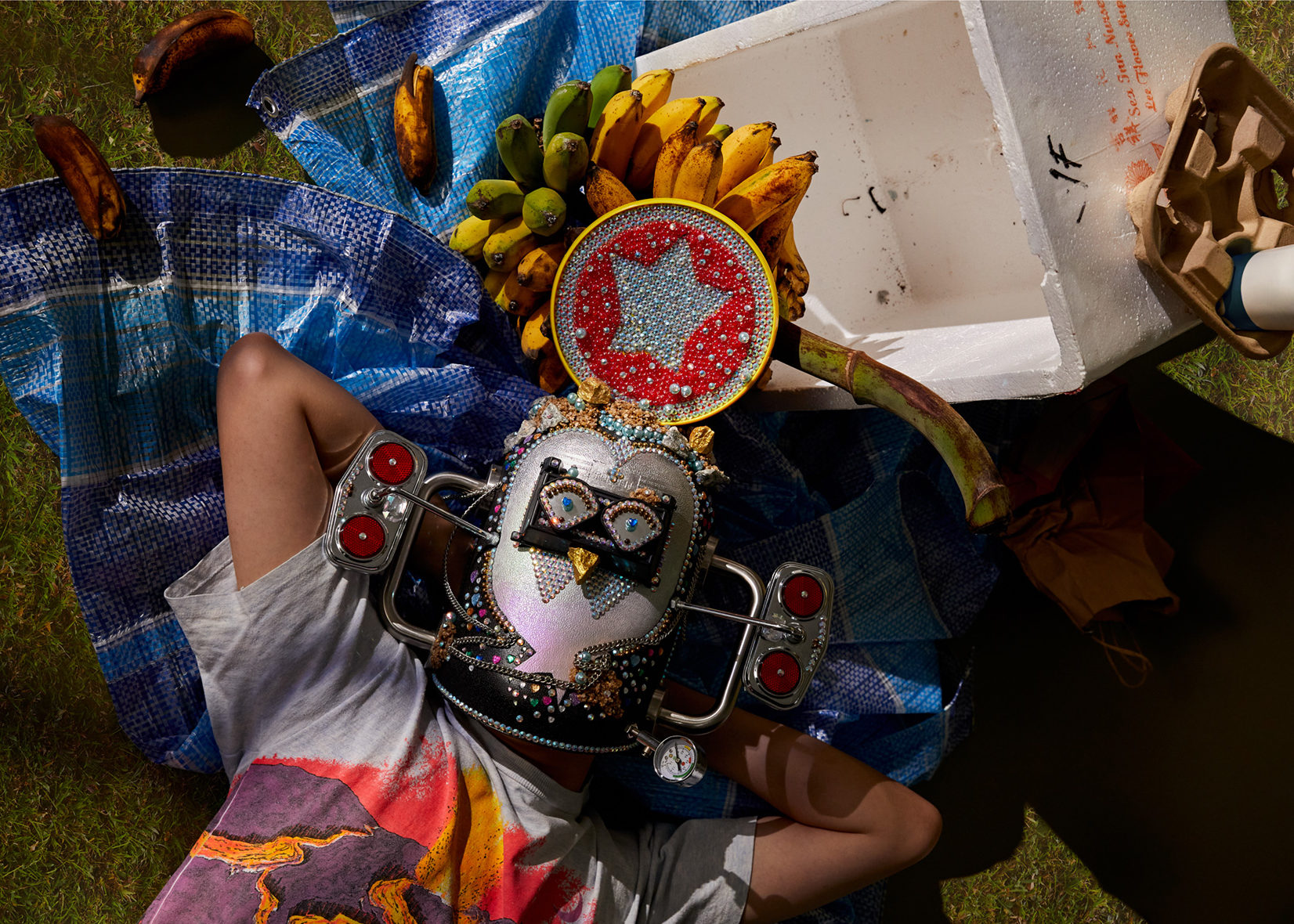
What type of effect does someone else’s gaze have on a person? How does someone control that and what toll does that effort take on a person? These questions are a significant part of Khairullah Rahim‘s work. Masks, cameras, camouflage—tools wielded in the cat-and-mouse pursuit between those seeking agency and privacy and others trying to strip them of it. He presents everyday, familiar objects as holding complex, hidden lives.
所谓凝视会对人带来哪些影响?被凝视者承担了怎样的压力、心理上应当如何应对?—— 这些都是 Khairullah Rahim 作品的关注重点,面具、监控和伪装都穿插在这场猫鼠游戏之中。这些花俏的面具作品,揭示了平凡表象背后纠葛的心灵。
Born and raised in Singapore, Khairullah is a gay ethnic minority from a working-class family. This background has made him the object of unwanted attention and placed him at the sore end of a significant power imbalance. His art is a distillation of all of these experiences.
Many of his family members are creative in some way, but he was the only one to pursue art as more than just a hobby. “Our priorities were slightly different,” he says of his family’s drive for stability over creative satisfaction. Although they were never against his artistic inclinations, the issue of his sexuality was a little more tricky. He was outed by another family member at 18, and they simply chose never to speak of it again. “I bear no grudges and it’s something I’ve learned to live with and accept,” he says. “In their own ways, I believe they’ve learned to accept me.”
Life outside the home is even more complex. Singapore is a country that still formally outlaws consensual sex between male adults, making it difficult to even talk about the issue. “Any kind of attempts to discuss, educate, or bring about awareness of issues pertaining to our lived experiences are often muffled, misrepresented, and heavily policed,” Khairullah says.
同志画家 Khairullah 生长于新加坡的工人阶级少数民族家庭。在传统家庭中长大,让他因身份而承受家人的有色眼镜、甚至不公平对待的苦果。这些无可奈何的经历都在他日后的艺术作品中得到集中体现。
许多他的家庭成员都在各自的领域饶有建树,但唯独 Khairullah 将艺术创作视为自己的职业追求。相比于艺术,家人往往更倾向于稳定收入的岗位,在谈及此事时,他表示:“我们每个人的生活重心略有不同。”虽然家人们从未反对过 Khairullah 的艺术事业,但就性取向这一问题上的态度却莫衷一是。十八岁时,他甚至因此被某位家庭成员逐出家门。自那之后,家人们对此事闭口不谈。“我并不怨恨他们,我已经能够坦然接受这一事实”, 他说:“我更愿意相信他们已经接纳了我的身份。”
然而,社会相比家庭要复杂得多。在新加坡,男性之间的同性性行为依然违法,即便自愿也是如此,这类话题在旁人看来是禁忌。他认为:“任何形式的讨论、教育以及发声统统会被打压和歪曲,政府甚至会兴师动众地派用大批警力来镇压。”

The dance between lovers is a space of freedom in Khairullah’s world, one he explores with affection and adoration. He often talks about “cruising”—a term describing the act of gay men seeking out partners in public spaces—drawing analogies between peacocking and the way real birds flaunt their plumage. In his exhibition, The Incredible Frolic, he gathered found objects from past “cruising grounds,” presenting them as quirky sculptures and assemblages, including a pair of wings made with rope scraps and public bathroom fixtures, some of it gathered from the beach and nearby pool facilities.
对于自己的艺术事业,Khairullah 满腔热血。在这里,恋人们可以自由共舞,无关乎性别。他常常提及“狩猎”一词,用来比喻同性在公共场所寻觅伴侣时的情形,他将其比作鸟儿在求偶时张开美丽翅膀的样子。在系列作品《纵情贪欢》(The Incredible Frolic)中,他将“狩猎场”中的出现的事物融入创作,例如其中一件作品便结合了泳池绳索和公共卫生间设施。
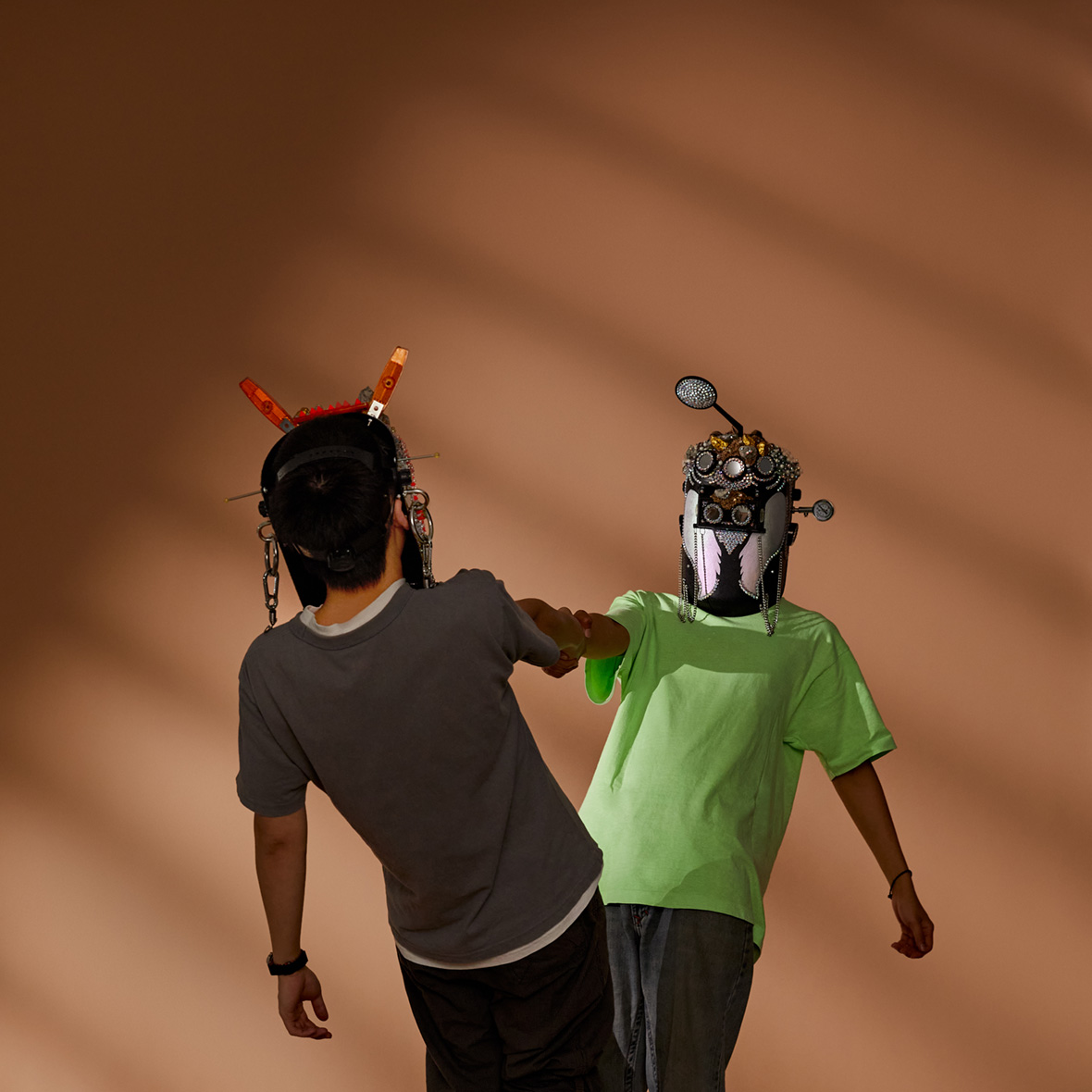
His love of birds began in childhood and they’ve appeared in his art for years. During an artist residency in Austria, he created his first pigeon mask as part of an exploration of avian beauty, featuring rhinestone feathers, a golden beak, and an ornate star halo. He later loosely built on the shared behavior between birds and humans with Gathering Of Flocks, an exhibition centered on his local neighborhoods. Each flock, or housing block, is captured through assemblages crafted from everyday domestic objects that range from bells, candles, fence posts, and clothes hangers. These creations, Khairullah believes, can represent “fragments of their private lives and social demographics.”
Khairullah 自孩提时期起便对鸟情有独钟。多年来,鸟在他的作品中屡见不鲜。曾在奥地利居住期间,他沉迷于飞行动物的美丽,并在那里首次制作了鸽子面具。这部面具由闪闪发亮的莱茵石、金色鸟喙点缀,不同材质彼此熠熠生辉。后来,他基于鸟和人类在生活场景中出现的共同道具,创作了系列作品《鸟群》(Gathering Of Flocks)。铃铛、蜡烛、篱笆和衣架等日常生活用品被恰到好处地进行组合,不同面具对应不同的道具。Khairullah 相信这些作品能够在一定程度上反映不同人群私下里迥异的生活习惯。
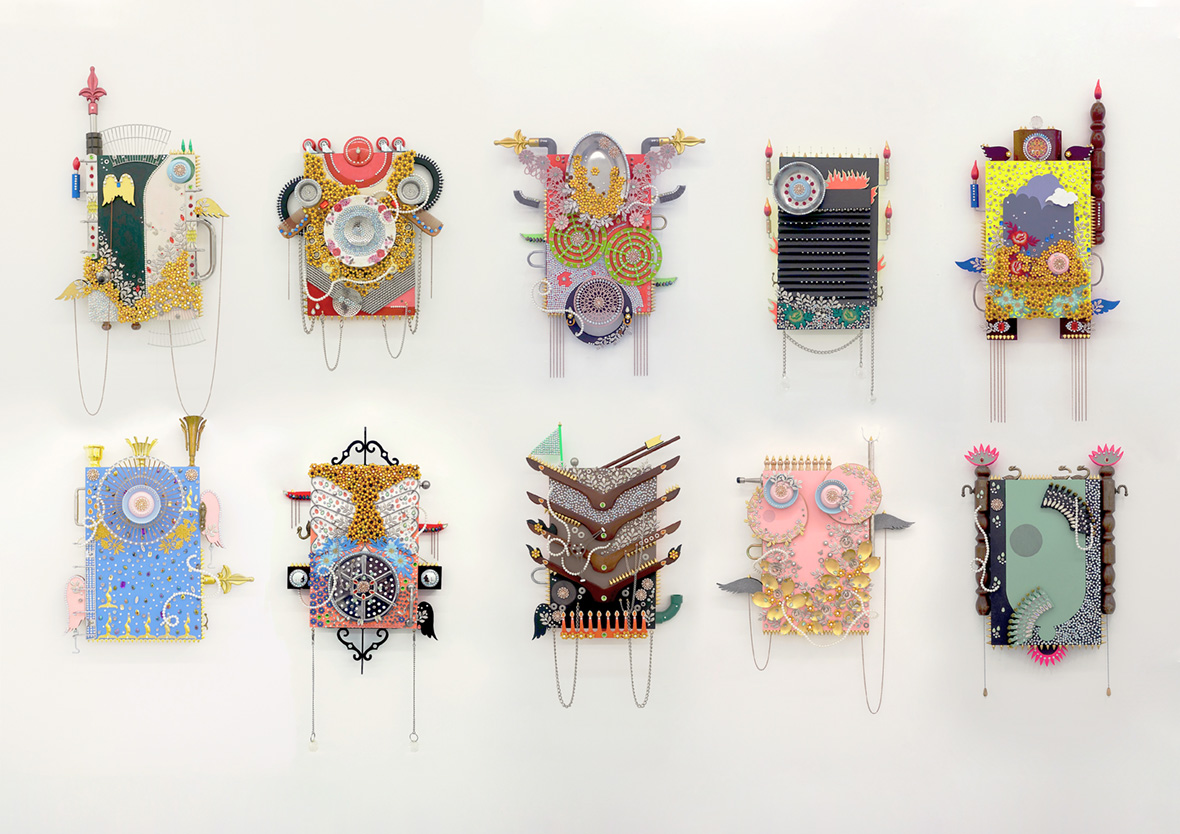
In the series Non-Precious Things, Khairullah again dwells on commonplace objects, but instead of reconfiguring them into abstract assemblages, he keeps their original form and decorates them with costume jewelry, stickers, and paint. When taken at face value, the items—blades, hammers, and cages—are mundane. And with his decorations, they’re imbued with a sense of levity and charm. “Upon closer inspection, each carries a certain sense of hostility and risk,” he notes of his object choices. “The beautification is a strategy to not only appeal but also to mask and obscure.” Dress it up however you want, danger is still danger. A bedazzled security camera is still a tool of surveillance and a golden mallet can still make for a deadly weapon.
在《日常配件》(Non-Precious Things)系列作品中,我们还可以看到生活中司空见惯的物品。这些物品饰以珠宝、贴画和颜料,并重新进行拆分组合,例如刀片、锤子和笼子都属于平价生活用品。在谈及物品的选择时,Khairullah 表示“细看便会体味出事物本身的敌意和风险……这种美化策略不仅是为了吸引眼球,同时也为了遮蔽和隐藏。”无论外表如何光鲜,危险依然存在。被装饰得花里胡哨的摄像头依然能监控人们的生活;能带来好运的金锤也可能是致命武器。”
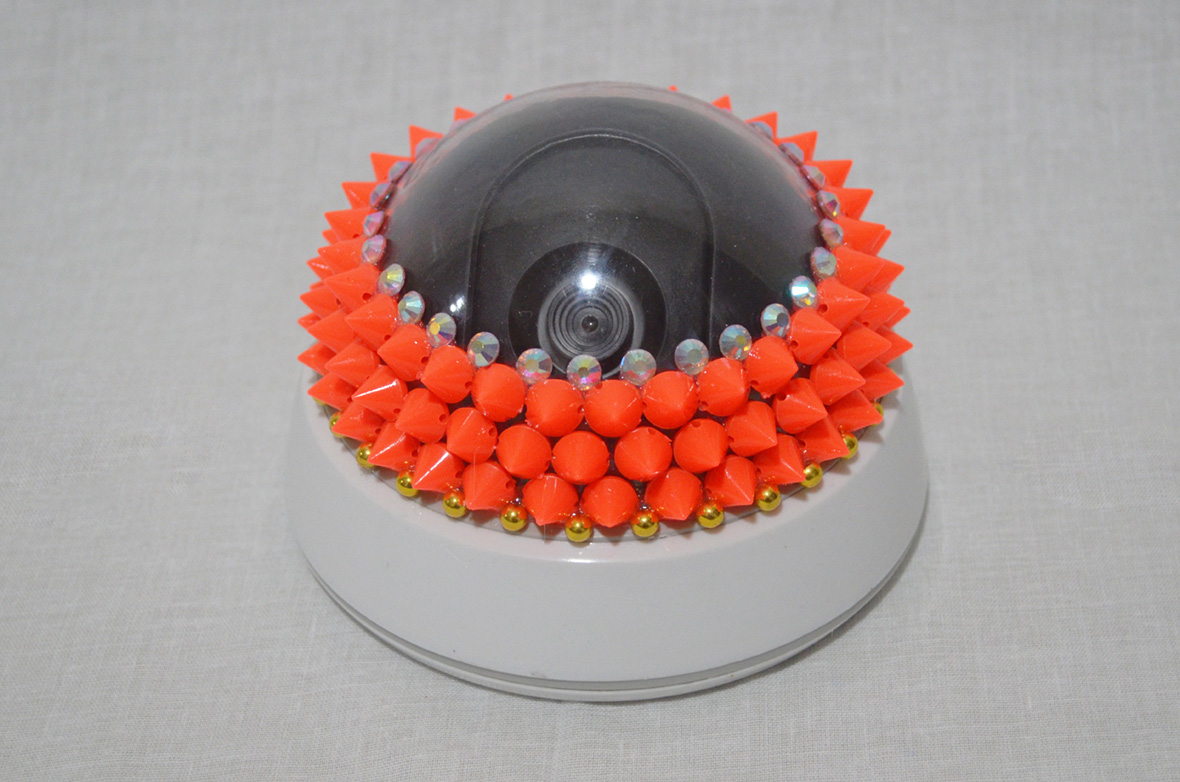
Classism is an issue dealt with most directly in Tender Musk. In the project, a human-like figure built from “dirty” cleaning supplies was set up on street corners, evoking imagery of a homeless person in plain sight yet still unseen by pedestrians. The piece is a statement on invisible professions like janitors, which are often shunned and overlooked, preferably forgotten. By placing the sculpture in public spaces, he draws that contrast out, highlighting a humanity that’s been erased.
Khairullah 曾举办过一场名为《柔情麝香》(Tender Musk)的个展,其直截了当地反映了阶级歧视问题。展区内,“肮脏”的清洁用品被堆成人形静静伫立,如无家可归者一般冷落不堪。这件作品为常常被人忽视的工作人群发声,人来人往与形单影只形成对比,强调了“被隐身”者的悲哀。
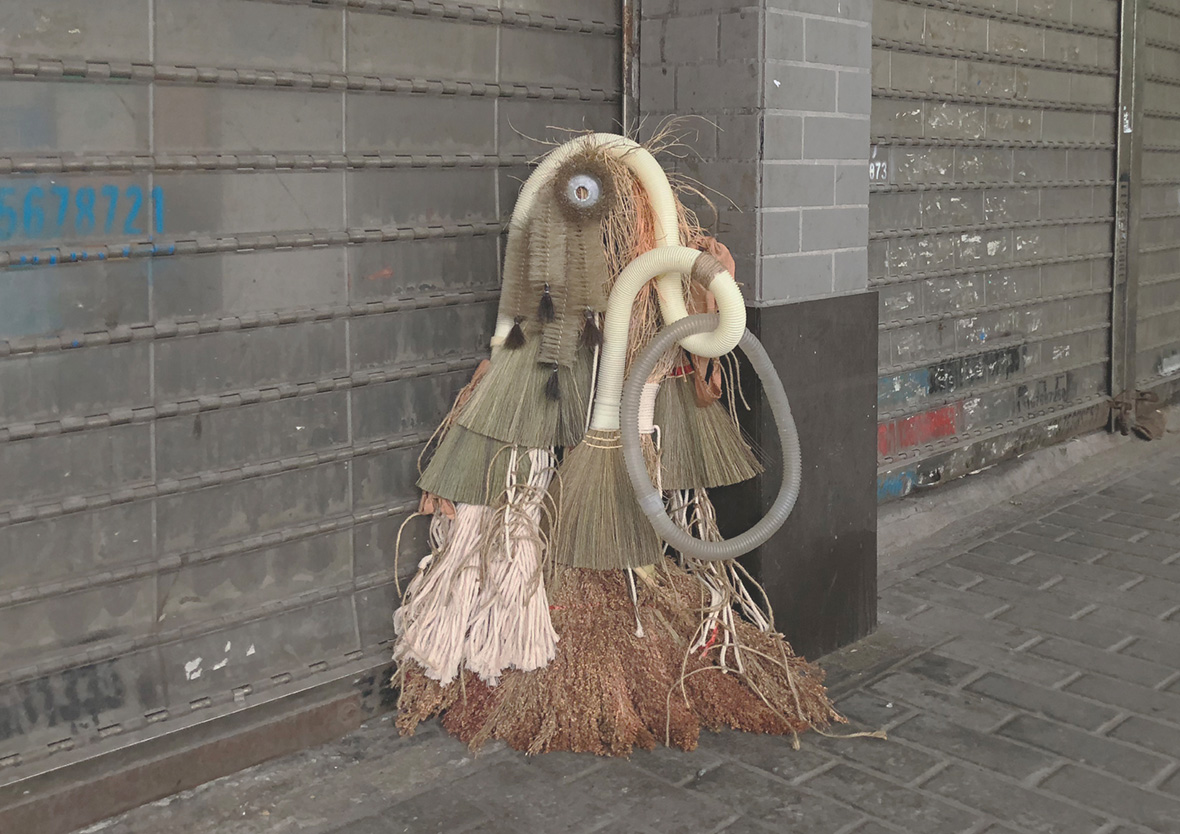
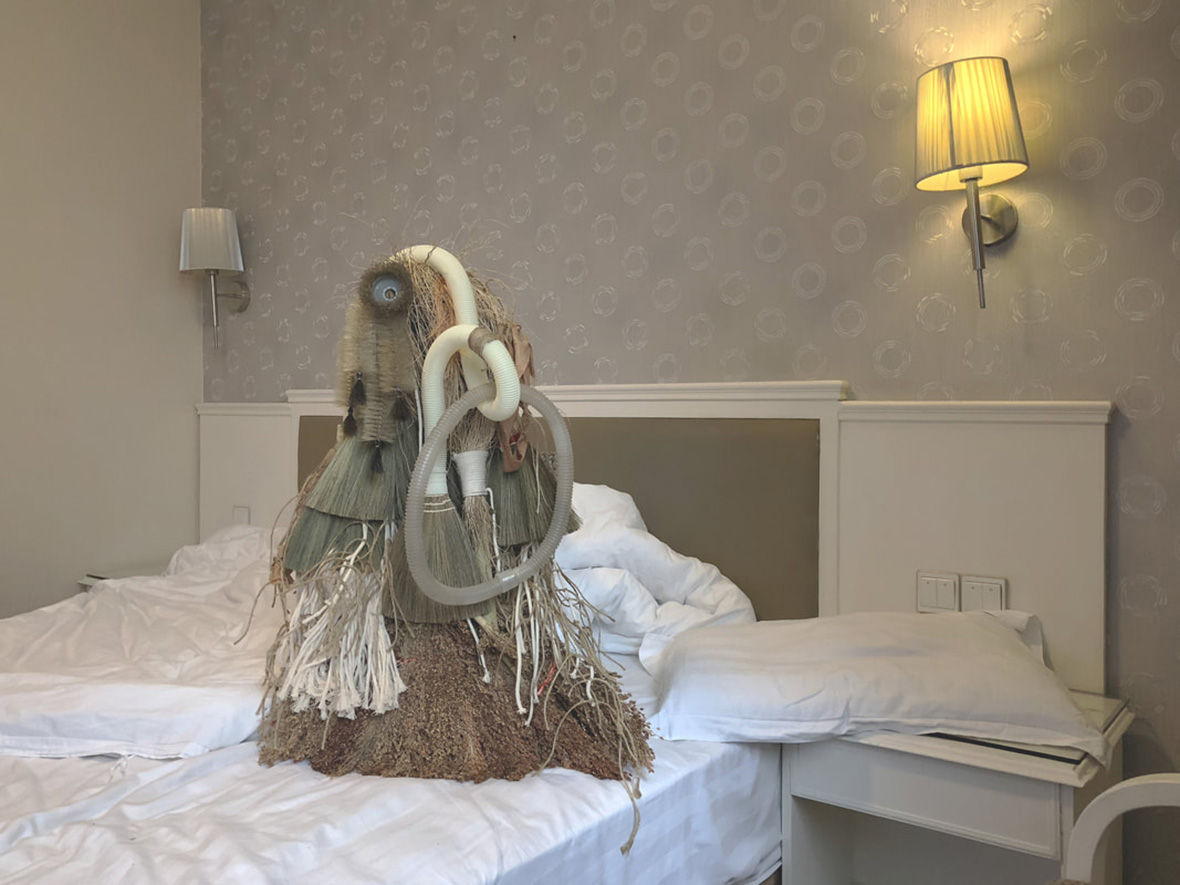
With his most recent mixed-media project, Pigeon (People Like Us), Khairullah has crystallized his ideas and aesthetics, tying together his various subjects of contemplation with striking masks. Each piece is an expansion on his original pigeon mask and is built out of welding face fields decorated with mirrors, road reflectors, handrails, and more. Everything is sourced from the working-class neighborhood of Boon Lay, which is populated by elderly people, migrant workers, and foreign students. All of these objects are ostensibly used for safety purposes, but installed on his masks, they become unwieldy and cumbersome. Their reflectivity is especially important: “Many associate light closely with notions of safety, but there are also lights which illuminate more intensely on some than others,” he says, explaining the symbolization of visibility. Some people may want to avoid that “light,” particularly those from disadvantaged communities. But the pieces also invert these ideas, with the reflective qualities also representing the shielding and repelling of unwanted attention.
Khairullah 将其观点和美学理念在最新的混合媒体项目《鸽子:我们这种人》中付诸实践。项目设计以他最初的鸽子面具为基础,在电焊面罩上饰以镜子、反光路标和栏杆碎片等物品,这些材料全部取自新加坡 Boon Lay 区域,那里常住着老人、外来务工人员和国际学生。作品大多选用可反光材料进行制作,在谈及其背后的意义时,Khairullah 认为:“许多人把光亮与安全紧密联系在一起,然而一些人群却被大众拒绝曝光。”对弱势群体来说,他们对于那“光”避之不及。也许从另一个角度看,这些装饰物的反射作用也象征着对于多余关注的抵挡,使特定人群不受到伤害。
As he started exploring the idea of hypervisibility more deeply, the idea of the pigeon from his earlier work took on deeper meaning: “The density and iridescence of the pigeon’s neck plumage, that reflection and deflection of light become a metaphor for visibility and defense mechanism in our lives,” he explains. “From one perspective, the mask does provide protection and safety by offering a sort of cover and anonymity. At the same time, this is often at the cost of rendering the wearer an imprecise, toned down, or even weakened voice.”
This piling on of defensive mechanisms, while necessary, creates unwelcome burdens. “Marginalized folk,” Khairullah hammers home, “are constantly navigating and code switching in between guilt, shame, and desire under surveillance in a hostile environment.”
随着对“光线”这一概念探究的逐渐深入,先前作品中的鸽子意象被赋予了更为深刻的含义:“鸽子颈部羽毛的密度和绚丽色彩对光线在不同程度上产生着反射和折射作用,象征着我们生活中的可见性和防御机制。一方面,面罩的遮挡确实能给人带来安全和保护;但与此同时,佩戴者的声音也会变得模糊不清,甚至被削弱”。
层层加码的防御机制虽然必要,但也给人带来了负担。Khairullah 无奈地表示:“在新加坡,像我们这种被边缘化人群一直生活在恶意中,面对外界的监视,始终在内疚、羞愧和欲望间左右摇摆、反反复复。”
Like our stories? Follow us on Facebook and Instagram.
Website: www.khairullahrahim.com
Instagram: @khairullahrahim
Contributor: Mike Steyels
Chinese Translation: Alice Zhang


